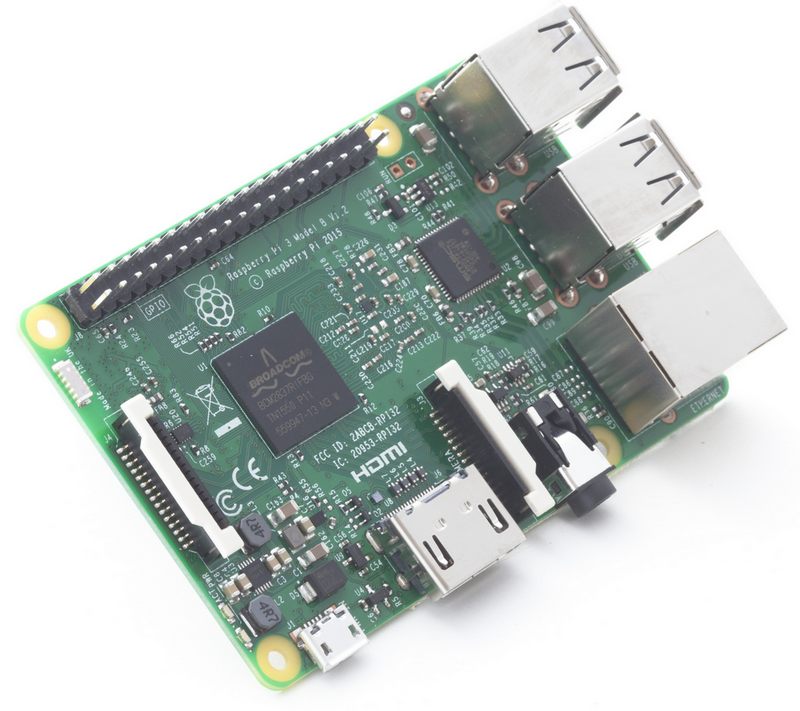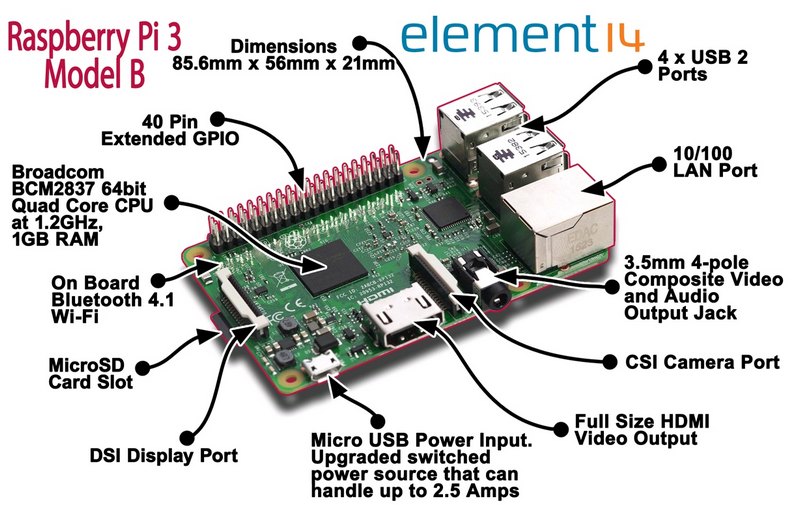Exactly four years ago, on 29 February 2012, we unleashed the original 256MB Raspberry Pi Model B on a largely unsuspecting world. Since then, we’ve shipped over eight million units, including three million units of Raspberry Pi 2, making us the UK’s all-time best-selling computer.
In celebration of our fourth birthday, RS Components and element14 have unveiled the Raspberry Pi 3 Model B. The latest version of the credit card sized computer features an SoC based on a 64bit ARM Cortex A53 quad core processor, as well as integrated Bluetooth and wireless LAN connectivity IoT development projects.
Eben Upton, CEO of Raspberry Pi Trading, said: “Four years ago today, we launched the first Raspberry Pi. Today, we’re launching Raspberry Pi 3. It’s still $35 and it’s still the size of your credit card, but now it comes with on-board wireless LAN and Bluetooth, 50% more processing power, and a quad core 64bit processor. The new Raspberry Pi opens up even more possibilities for IoT and embedded projects; we hope you like it as much as we do. Our primary goal in moving to A53 from A7 was to get a better 32-bit core, and A53 running in 32-bit mode outperforms A7 at the same clock speed by 20-30 percent.”
The board is based on the Broadcom BCM2837 SoC, which includes an ARM Cortex-A53 quad core processor running at 1.2GHz. A BCM43438 combo device provides IEEE802.11b/g/n wireless LAN, Bluetooth Classic and Bluetooth Low Energy connectivity. The BCM2837 also integrates a dual core VideoCore IV multimedia coprocessor.
For Raspberry Pi 3, Broadcom have supported us with a new SoC, BCM2837. This retains the same basic architecture as its predecessors BCM2835 and BCM2836, so all those projects and tutorials which rely on the precise details of the Raspberry Pi hardware will continue to work. The 900MHz 32-bit quad-core ARM Cortex-A7 CPU complex has been replaced by a custom-hardened 1.2GHz 64-bit quad-core ARM Cortex-A53. Combining a 33% increase in clock speed with various architectural enhancements, this provides a 50-60% increase in performance in 32-bit mode versus Raspberry Pi 2, or roughly a factor of ten over the original Raspberry Pi.
James Adams spent the second half of 2015 designing a series of prototypes, incorporating BCM2837 alongside the BCM43438 wireless “combo” chip. He was able to fit the wireless functionality into very nearly the same form-factor as the Raspberry Pi 1 Model B+ and Raspberry Pi 2 Model B; the only change is to the position of the LEDs, which have moved to the other side of the SD card socket to make room for the antenna. Roger Thornton ran the extensive (and expensive) wireless conformance campaign, allowing us to launch in almost all countries simultaneously. Phil Elwell developed the wireless LAN and Bluetooth software.
All of the connectors are in the same place and have the same functionality, and the board can still be run from a 5V micro-USB power adapter. This time round, we’re recommending a 2.5A adapter if you want to connect power-hungry USB devices to the Raspberry Pi.
Raspberry Pi 3 is available to buy today from our partners element14 and RS Components, and other resellers.

